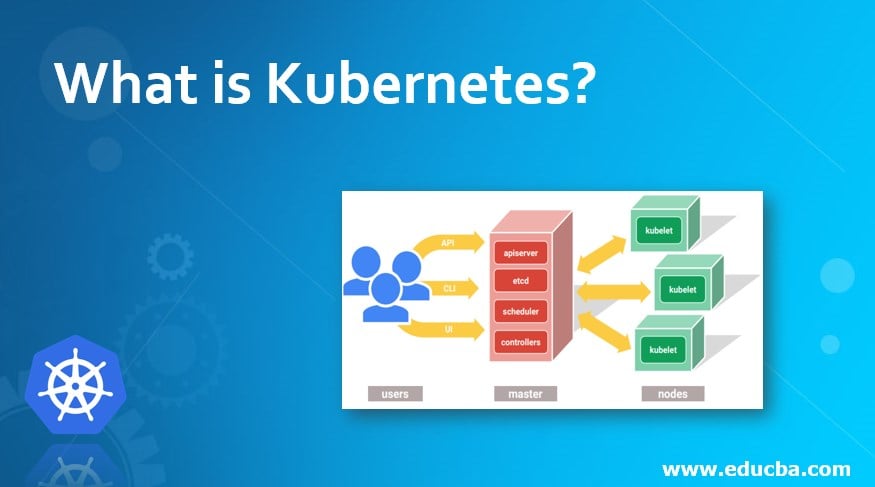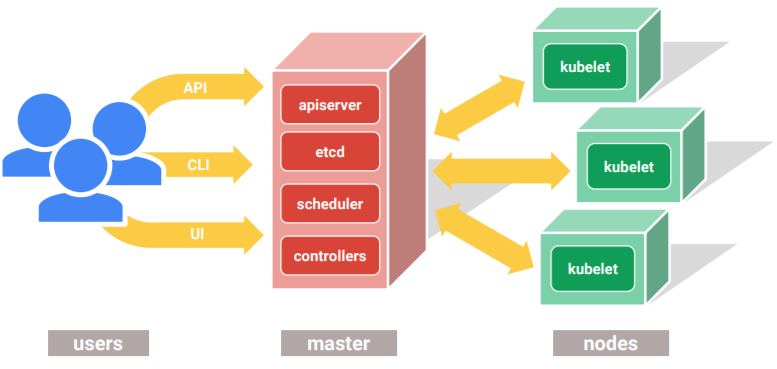Updated June 8, 2023

Introduction to Kubernetes
The following article provides an outline for What is Kubernetes? Containers are a standard way of packaging apps and all their dependencies so you can move apps across environments seamlessly. Containers do not bundle the operating system as opposed to virtual machines. Containers contain the app code, run time, system tools, libraries, and settings. Containers are lighter, more portable, and more effective than virtual machines.
It is a container management tool. The main goal of this tool is deploying containers, scaling and descaling containers, and balancing container load. It is not based on the containerization platform; it provides solutions for managing multiple containers. It supports multiple cloud and bare-metal environments. It is 100% Open source, written in GoOne. Google pushed Kubernetes to open source two years ago. One of its key selling points is its extensive usage in running Google’s massive systems for a significant period of time.
Kubernetes Architecture
Below is the architecture:
Since this creates a background in cluster computing, it all works from inside a cluster. This cluster hosts one node, which acts as the cluster’s ‘ master, ‘ and other nodes as the ‘ containerized ‘ nodes. Each node can run several such Pods for deployment, a group of containers interacting. The replication controller serves as a master to ensure that the required pods always run on nodes.
Node is a separate host in the Kubernetes cluster used to start threads and containers. This Minion node slave is usually used only for launching and developing the application containers. Kubelet is a process started at each lower node intended for its management, load control, and operation.
Benefits of Using Kubernetes
Now, this technology is used actively in nearly all cloud-based Google projects. It provides expensive horizontal scalability to multiple hosts by distributing containers. The system replicates operability for self-recovery during sudden power failures or technical emergencies. It has algorithms for operations like this.
Advantages of Kubernetes
We will examine the benefits that will help you move ahead of your competitors and boost your bottom line.
1. Load balancing and Service Discovery
As Kubernetes automatically assign a specific IP address to each container, there is no need to worry about networking and communication between containers. They communicate with each other through IP addresses. It also assigns a DNS name, i.e., Domain Name System, for a set of containers to balance loading clusters’ traffic.
2. Automatic Bin Packing
It automatically packages application schedule containers based on the requirements and available resources. It manages critical and best efforts to ensure the complete utilization of data and accordingly saves the report of unused sources.
3. Storage Orchestration
It allows users to mount the storage; if their storage space has been filled, they can create another mount and save their data. Users can choose any storage options like local storage, public or private cloud providers like AWS, or storage systems like NFS (Network file system), iSCSI, etc.
4. Self-Healing
When any containers fail during the execution time, it automatically restarts those failed containers. If containers do not respond to the user, they will be deleted by it.
5. Batch Execution
It can run a batch of containers simultaneously and handle the CI workload. If containers fail, it restarts those containers or replaces those with another container, if needed.
6. Horizontal Scaling
Scaling up and down containers can be done by only one command. It can also be carried out by using Kubernetes dashboards.
7. Secret and Configuration Management
It deploys and updates configuration and secrets without revealing secrets to stack configuration.
8. Automatic Rollback and Rollout
It automatically rolls out and updates changes in the applications. It automatically rollbacks the changes if some problems occur.
9. Helps you to Move Faster
It offers the abstraction for a hardware-level layer for developer teams by creating a self-service platform as a service (PaaS). The development item can quickly request the resources they need.
10. Kubernetes is Cost Efficient
Kubernetes and containers make far better use of resources than hypervisors and VMs. The lightweight containers require fewer CPU and memory resources to work.
Why do we need Kubernetes?
Many organizations use Linux, docker, and Rocket for managing the containers. They use those containers on a massive scale. The organization is not using one or two containers; instead, they use 10 to 100 containers to maintain the loading balance and ensure that the resources are available.
When the traffic of loading increases, i.e., N number of requests comes within a second, the organization may have to scale up the containers. But when containers go increasing day by day, the chances of having complexity increase. That is why those containers are handled; the need for container management tools increases. And then it comes into the market. Its functionality has made it popular, and Google uses it as its brainchild.
Scope of Kubernetes
Kubernetes Expert is a trending and exciting profession in the IT industry. Hence there are plenty of opportunities for Kubernetes Administrators and Kubernetes Service Providers. The salary for even junior-level Kubernetes administrators is quite high. The approximate pay scale of a Junior Kubernetes administrator in India is Rs.6,00,000 per year. Whereas, In the United States of America, the average salary for a junior Administrator is $50K per year.
As a result, there is an increasing demand for trained and skilled Kubernetes administrators and engineers. So it can be said that this technology will become a leading technology in the field of orchestration in the coming future. Hence it is creating new job roles as the velocity of Kubernetes is exploding daily. Kubernetes training certification courses help anyone who wants to make a career as a Kubernetes Administrator or Service Provider. Certifications are available from IBM, Linux Academy, cloud academy, etc. Its administrators can also improve their skills by taking advanced courses.
Conclusion
This is a guide to Kubernetes, which allows users to run scalable, highly available containerized workloads on a highly scalable and open-source platform. This article has seen the architecture of Kubernetes, its advantages, applications, and scope.
Recommended Articles
This has been a guide to What is Kubernetes? Here we discuss the introduction, need, architecture, and advantages of Kubernetes. You can also go through our other suggested articles to learn more –



